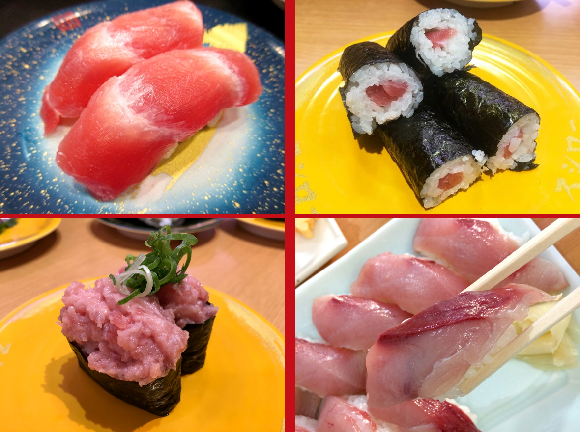
You can love many kinds of sushi, but for your last piece, you can only have one, so which one should it be?
Kaitenzushi restaurants, where you grab plates of sushi off a conveyor belt as they stream past you, are a fantastic choice for indecisive diners. Since you’re not locked into any sort of set meal, you can grab whatever you like, in whatever quantity you like, on a whim, allowing you to make adjustments on the fly like a seafood-loving dynamo.
But while the freedom and flexibility of kaitenzushi may be limitless, your stomach capacity, of course, is finite. So as you feel yourself getting full, at some point you’re going to have to answer a difficult question: What should your last piece of sushi be?
That’s one of the things Japanese fishery company Maruha Nichiren asked Japanese diners in its annual kaitenzushi survey, which this year collected responses from 1,000 participants (500 men and 500 women). Let’s take a look at the top 10 choices for how to cap a sushi meal (and if you think you can never have too much sushi, you’ll be happy to know that thanks to ties and Japanese linguistic quirks, there are actually 12 types of sushi in this “top 10”).
10 (tie). Otoro (3.2 percent of respondents)
10 (tie). Negitoro (3.2 percent)
Otoro (extra-fatty tuna) and negi toro (minced tuna belly with green onions, as seen above) are tasty, but also two of the more decadent items on the menu at a sushi restaurant, and perhaps a bit heavy of an ending note for some people’s tastes. There’s also the fact that otoro is just about the most expensive kind of sushi, so if you’ve already plowed through several other plates of premium-priced selections, you might find yourself reaching for something that’s lighter in your stomach and on your wallet (as proof, we’re too cheap to even have a picture of otoro).
8 (tie). Uni (3.5 percent)
8 (tie). Hamachi/buri (3.5 percent)
Another tie, one half of which is uni (sea urchin). On the other end, we’ve got hamachi and buri, which are both actually the same fish: yellowtail. Certain species of fish get called by different names in Japanese depending on how old the fish is, so younger yellowtail are hamachi while more mature specimens are buri, highly prized for its firm texture and especially sweet flavor when caught in winter (and while we’re at it, there’s also inada, yellowtail that’s even younger than hamachi, which is also delicious, though somewhat harder to find in restaurants).
7. Maguro akami (3.6 percent)
We’re going to see tuna on the list several times, but in this case we’re referring to the standard, lean cut of the fish, which has always been a sushi stalwart.
6. Engawa (3.9 percent)
If you’re learning Japanese, engawa is a two-for-one vocabulary word. Not only does it refer to the outer edge of a cut of flounder (seen here sitting atop slices of shiso, or Japanese basil), it also means “veranda,” since that’s the part of a house found at its outer edge.
4 (tie). Tekkamaki (4.7 percent)
4 (tie). Ebi (4.7 percent)
Tekkamaki, thin tuna rolls, usually comes sliced into either four or six morsels, making it a convenient thing to share with friends if you’re all craving just a bit more sushi, but don’t think you can finish off a whole plate by your selves. Meanwhile, ebi (shrimp) being served boiled instead of raw provides a clean, non-fishy flavor to finish on.
3. Chutoro (5.4 percent)
Medium-fatty tuna is more moderate in price and fattiness than otoro, and so it’s a comfortably affordable luxury to have lingering on your taste buds as you walk away from the counter.
2. Tamago (5.8 percent)
The humble tamago (egg) might seem like an anticlimactic closer, but Japanese-style omelets have an enticing sweetness to them, and so making your last piece of sushi tamago is almost like eating a refreshing dessert.
1. Salmon (10.5 percent)
And finally, the survey participants’ favorite finale was salmon, which gets called by the corrupted pronunciation saamon as often as it does the indigenous Japanese “shake.”
Salmon has a number of things going for it. Delicious as it is, it’s also got a clean finish, so you won’t find yourself in need of a palate cleanser. It’s also low-priced and light in oil, making it a guilt-free option in more ways than one.
But salmon no doubt owes a lot of its first-place finish to the simple fact that it’s consistently picked by Japanese diners as their favorite kind of sushi, and that trend continued in Maruha Nichiro’s most recent poll. In addition to being the top choice for final piece of sushi, salmon was the number-one pick for “first piece of sushi to eat,” and also for “type of sushi you often eat” at kaitenzushi restaurants. Oh, and it swept those ranking regardless of whether you’re counting the 1,000 respondents as a whole or dividing them into responses from men and women. Just one more arrow to have in your quiver should some ill-informed foodie try to tell you that “people in Japan don’t eat raw salmon.”
Cast your vote:
Source: Maruha Nichiro
Photos ©SoraNews24
[ Read in Japanese ]
Follow Casey on Twitter, where he says there’s never a bad time for amberjack sushi.

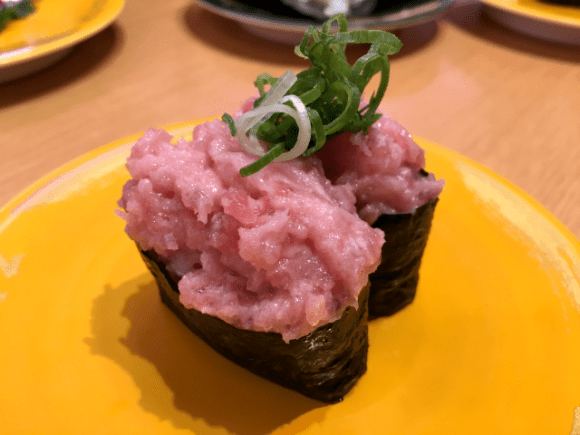
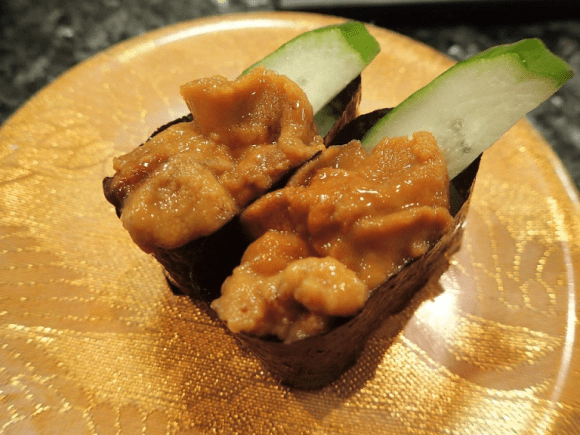
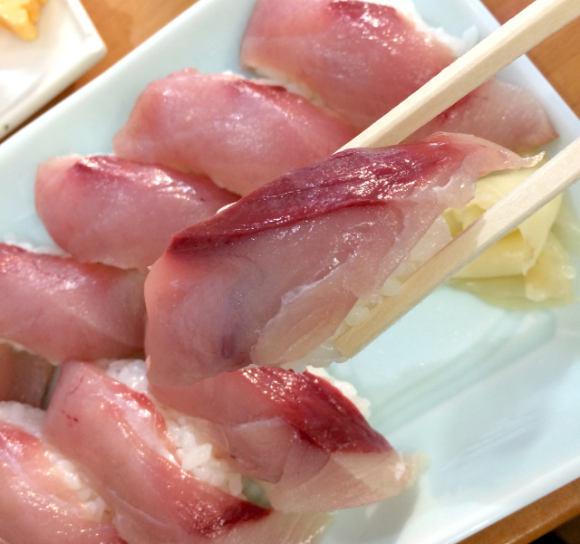
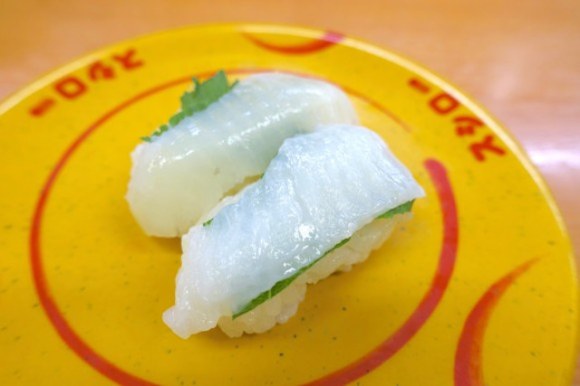

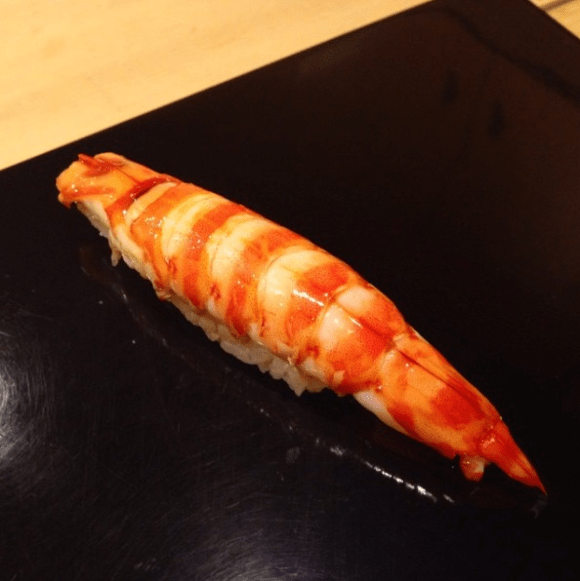
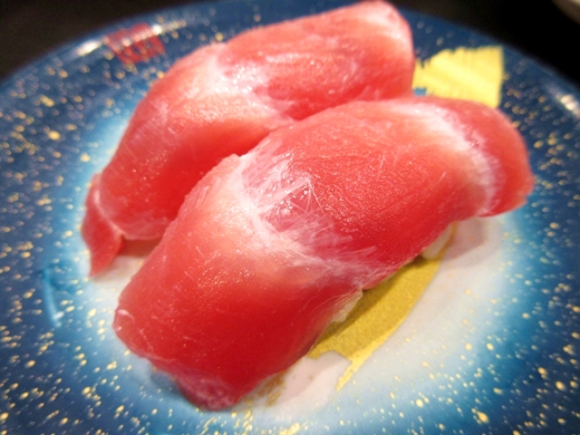
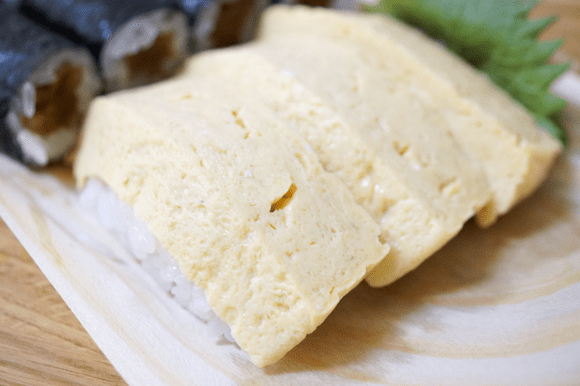
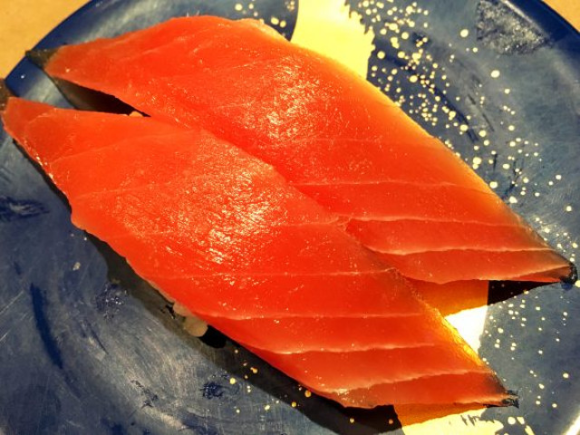
 Which Japanese conveyor belt sushi chain has the best yellowtail sushi?【Taste test】
Which Japanese conveyor belt sushi chain has the best yellowtail sushi?【Taste test】 We eat 13 of the most highly recommended sushi items at Sushiro and pick the best of the best
We eat 13 of the most highly recommended sushi items at Sushiro and pick the best of the best This type of conveyor belt sushi tastes different in Tokyo than it does in Osaka, but why?
This type of conveyor belt sushi tastes different in Tokyo than it does in Osaka, but why? Japan super budget dining – What’s the best way to spend 1,000 yen at sushi restaurant Sushiro?
Japan super budget dining – What’s the best way to spend 1,000 yen at sushi restaurant Sushiro? What’s the best way to spend 1,000 yen at Kura Sushi?【Japan Super Budget Dining】
What’s the best way to spend 1,000 yen at Kura Sushi?【Japan Super Budget Dining】 Rakuten randomly offers 58 New Year’s osechi feasts in Japan, but did we get a star or a dud?
Rakuten randomly offers 58 New Year’s osechi feasts in Japan, but did we get a star or a dud? The Purple Lucky Bag from Village Vanguard is an extra-large waste of money
The Purple Lucky Bag from Village Vanguard is an extra-large waste of money Majority of Japanese mayors say foreign residents are essential but most see good and bad effects
Majority of Japanese mayors say foreign residents are essential but most see good and bad effects Starbucks Japan ready to get Year of the Horse started with adorable drinkware and plushies【Pics】
Starbucks Japan ready to get Year of the Horse started with adorable drinkware and plushies【Pics】 New Japanese menstrual product seeks to help women spot unidentified iron deficiencies
New Japanese menstrual product seeks to help women spot unidentified iron deficiencies 7-Eleven Japan has a hack for creating insanely delicious potato chip rice meals
7-Eleven Japan has a hack for creating insanely delicious potato chip rice meals Kyoto samurai house wants to share its history of seppuku, torture and gold coins with visitors
Kyoto samurai house wants to share its history of seppuku, torture and gold coins with visitors Japan’s first hotel with a human washing machine is now ready for you to come and bathe in it
Japan’s first hotel with a human washing machine is now ready for you to come and bathe in it The new Pikachu and Psyduck donuts are here! Taste-testing the Mister Donut Pokémon sweets【Photos】
The new Pikachu and Psyduck donuts are here! Taste-testing the Mister Donut Pokémon sweets【Photos】 Tokyo event lets you travel back in time, for free, to celebrate 100 years since Showa era start
Tokyo event lets you travel back in time, for free, to celebrate 100 years since Showa era start Hayao Miyazaki says Happy New Year to Studio Ghibli fans with new art for Year of the Horse
Hayao Miyazaki says Happy New Year to Studio Ghibli fans with new art for Year of the Horse Japanese beef bowl chain Sukiya’s 2026 Smile Box lucky bag basically pays for itself
Japanese beef bowl chain Sukiya’s 2026 Smile Box lucky bag basically pays for itself We found possibly the quietest Japanese-style hotel in Tokyo’s bustling Shinjuku district
We found possibly the quietest Japanese-style hotel in Tokyo’s bustling Shinjuku district Cup Noodle tries an authentic Jiro-style ramen, but something’s not quite right
Cup Noodle tries an authentic Jiro-style ramen, but something’s not quite right The best Starbucks Japan Frappuccinos we want to drink again in 2026
The best Starbucks Japan Frappuccinos we want to drink again in 2026 We revisited Sweets Paradise after a decade to see if Japan’s dessert buffet still delivers
We revisited Sweets Paradise after a decade to see if Japan’s dessert buffet still delivers That time Seiji called JASRAC to ask why he didn’t get paid royalties for his song being on TV
That time Seiji called JASRAC to ask why he didn’t get paid royalties for his song being on TV Japan’s oldest largetooth sawfish in captivity back on display in Mie Prefecture
Japan’s oldest largetooth sawfish in captivity back on display in Mie Prefecture Pizza Hut Japan’s hot lucky bags are perfect for a New Year’s pizza party
Pizza Hut Japan’s hot lucky bags are perfect for a New Year’s pizza party 7-Eleven Japan starts new temporary luggage storage service in over 300 branches
7-Eleven Japan starts new temporary luggage storage service in over 300 branches Disillusionment at Tsukiji’s tourist-target prices led us to a great ramen restaurant in Tokyo
Disillusionment at Tsukiji’s tourist-target prices led us to a great ramen restaurant in Tokyo Starbucks teams up with 166-year-old Kyoto doll maker for Year of the Horse decorations【Photos】
Starbucks teams up with 166-year-old Kyoto doll maker for Year of the Horse decorations【Photos】 Tokyo considering law requiring more trash cans following litter increase in heavily touristed area
Tokyo considering law requiring more trash cans following litter increase in heavily touristed area Tokyo’s Tsukiji sushi neighborhood asks tour groups to stay away for the rest of the month
Tokyo’s Tsukiji sushi neighborhood asks tour groups to stay away for the rest of the month Japan may add Japanese language proficiency, lifestyle classes to permanent foreign resident requirements
Japan may add Japanese language proficiency, lifestyle classes to permanent foreign resident requirements Sanrio theme park in Japan announces plans to expand into a Sanrio resort
Sanrio theme park in Japan announces plans to expand into a Sanrio resort Stamina-destroying “Paralysis Noodles” are Tokyo’s newest over-the-top ramen innovation
Stamina-destroying “Paralysis Noodles” are Tokyo’s newest over-the-top ramen innovation Survey asks foreign tourists what bothered them in Japan, more than half gave same answer
Survey asks foreign tourists what bothered them in Japan, more than half gave same answer Japan’s human washing machines will go on sale to general public, demos to be held in Tokyo
Japan’s human washing machines will go on sale to general public, demos to be held in Tokyo Japan’s deadliest food claims more victims, but why do people keep eating it for New Year’s?
Japan’s deadliest food claims more victims, but why do people keep eating it for New Year’s? We deeply regret going into this tunnel on our walk in the mountains of Japan
We deeply regret going into this tunnel on our walk in the mountains of Japan Studio Ghibli releases Kodama forest spirits from Princess Mononoke to light up your home
Studio Ghibli releases Kodama forest spirits from Princess Mononoke to light up your home Major Japanese hotel chain says reservations via overseas booking sites may not be valid
Major Japanese hotel chain says reservations via overseas booking sites may not be valid Put sesame oil in your coffee? Japanese maker says it’s the best way to start your day【Taste test】
Put sesame oil in your coffee? Japanese maker says it’s the best way to start your day【Taste test】 No more using real katana for tourism activities, Japan’s National Police Agency says
No more using real katana for tourism activities, Japan’s National Police Agency says Starbucks Japan reveals new sakura drinkware collection, inspired by evening cherry blossoms
Starbucks Japan reveals new sakura drinkware collection, inspired by evening cherry blossoms Updated cherry blossom forecast shows extra-long sakura season for Japan this year
Updated cherry blossom forecast shows extra-long sakura season for Japan this year Which Japanese conveyor belt sushi chain has the best bintoro sushi?【Taste test】
Which Japanese conveyor belt sushi chain has the best bintoro sushi?【Taste test】 Who loves revolving sushi? Only families, couples, and solo diners (so, just about everyone)
Who loves revolving sushi? Only families, couples, and solo diners (so, just about everyone) Which Japanese conveyor belt sushi chain has the best egg sushi?【Taste test】
Which Japanese conveyor belt sushi chain has the best egg sushi?【Taste test】 Japan’s Sushiro revolving sushi chain stops revolving with conveyor-less food court branch
Japan’s Sushiro revolving sushi chain stops revolving with conveyor-less food court branch How to use Japan’s revolving sushi capsule toy for a literal revolving sushi meal at home
How to use Japan’s revolving sushi capsule toy for a literal revolving sushi meal at home Japan super budget dining – What’s the best way to spend 1,000 yen at Hama Sushi?
Japan super budget dining – What’s the best way to spend 1,000 yen at Hama Sushi? Which Japanese conveyor belt sushi chain has the best salmon sushi?【Taste test】
Which Japanese conveyor belt sushi chain has the best salmon sushi?【Taste test】 Sharpen your sushi-selecting skills with the High Speed Sushi-Go-Round Quiz! 【Videos】
Sharpen your sushi-selecting skills with the High Speed Sushi-Go-Round Quiz! 【Videos】 Japanese diners pick their eight favorite types of sushi, create mouthwatering dinner blueprint
Japanese diners pick their eight favorite types of sushi, create mouthwatering dinner blueprint Which Japanese conveyor belt sushi chain has the best ikura sushi?【Taste test】
Which Japanese conveyor belt sushi chain has the best ikura sushi?【Taste test】 Which Japanese conveyor belt sushi chain has the best aburi salmon sushi?【Taste test】
Which Japanese conveyor belt sushi chain has the best aburi salmon sushi?【Taste test】 Esteemed Japanese sushi chain ranks the top 15 most popular sushi toppings among customers
Esteemed Japanese sushi chain ranks the top 15 most popular sushi toppings among customers What happens in the kitchen of a conveyor belt sushi restaurant? Let’s find out at Sushiro!
What happens in the kitchen of a conveyor belt sushi restaurant? Let’s find out at Sushiro! Which Japanese conveyor belt sushi chain has the best saltwater eel sushi?【Taste test】
Which Japanese conveyor belt sushi chain has the best saltwater eel sushi?【Taste test】 Which Japanese conveyer belt sushi chain has the best chutoro?【Taste test】
Which Japanese conveyer belt sushi chain has the best chutoro?【Taste test】 Which Japanese conveyor belt sushi chain has the best tuna sushi?【Taste test】
Which Japanese conveyor belt sushi chain has the best tuna sushi?【Taste test】
Leave a Reply